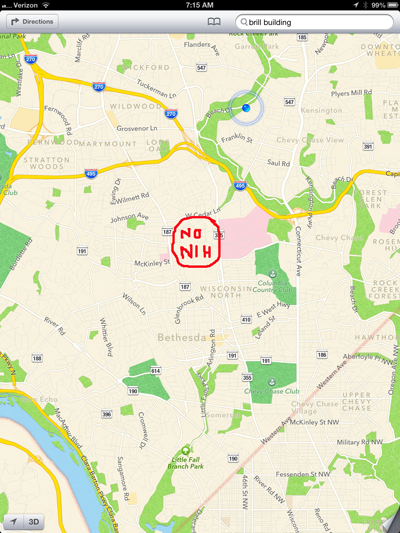I was hoping that with the official release of iOS 7, Apple would finally produce some major improvements in Apple Maps. But for all the attention Apple has lavished on other parts of the new OS, Apple seems to have given Maps the Find My Friends treatment. It looks like an iOS 7 apps, but that seems to be about it.
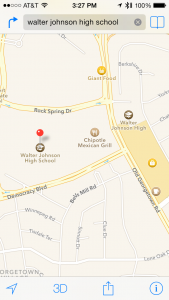
The worst problems continue to be in the map database. I know that in some places, such as the San Francisco Bay area, the maps are pretty good. But in my neck of the woods, they stink.
Consider the image to the left. A search for a Bethesda, MD, high school found it at its correct location, more or less. But look to the right, across Old Georgetown Road. There’s another Walter Johnson High School that is a permanent feature. And wrong.
In fact, there are at least three other errors in this one little panel. That street south of Democracy Boulevard is Bells Mill Road, not BeVs Mill. The Giant Food is on the wrong side of Rock Spring Drive. It should be next to the Chipotle, where both are part of an otherwise missing shopping center.
In fact, just about every map screen I look at in my neighborhood has a mistake of some sort. A nonexistent school shows up a few blocks from my home, several miles from the school’s actual location. The National Institutes of Health Bethesda main campus, not exactly a minor landmark, is not indicated on the map. (I reported both of these errors to Apple a year ago.) The Walter Reed National Military Medical Center is shown as the national Naval Medical Center, a name dropped two years ago, and the Uniformed Services University of the Health Sciences and Howard Hughes Medical Institute are missing.
Apple has still not done what is needed to improve the shortcomings of the apps itself. There are still no public transit directions, one of the more useful features of Google Maps. Switching between driving and walking instructions remains awkward.
At least the driving directions from my home to Dulles Airport no longer terminate at the side of a highway next to a security fence, as they did originally. But the instructions come with a curious warning that the route requires tolls. It does’;t and the app ought to know it, since it correctly routes me onto the free Dulles Access Highway rather than the parallel Dulles Toll Road.
Fortunately, for the past several months, we have had an excellent version of Google Maps for the iPhone, so I rarely use Apple’s offering. But if Apple wants to be a serious player in this important part of the mobile business, it will have to do better–eventually.

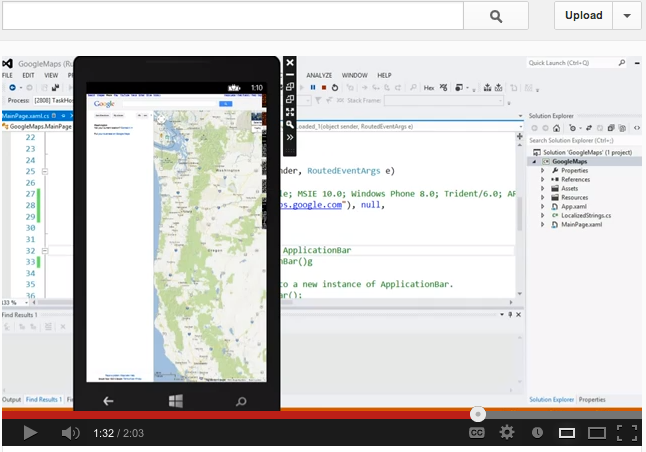

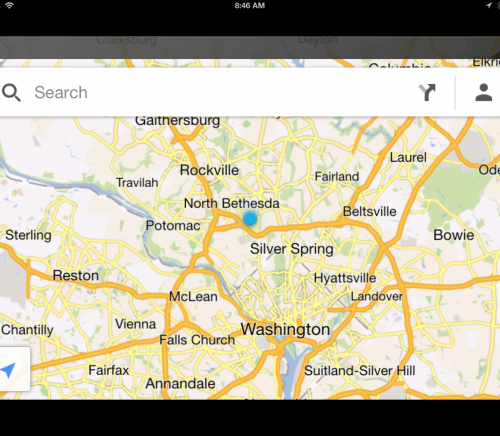
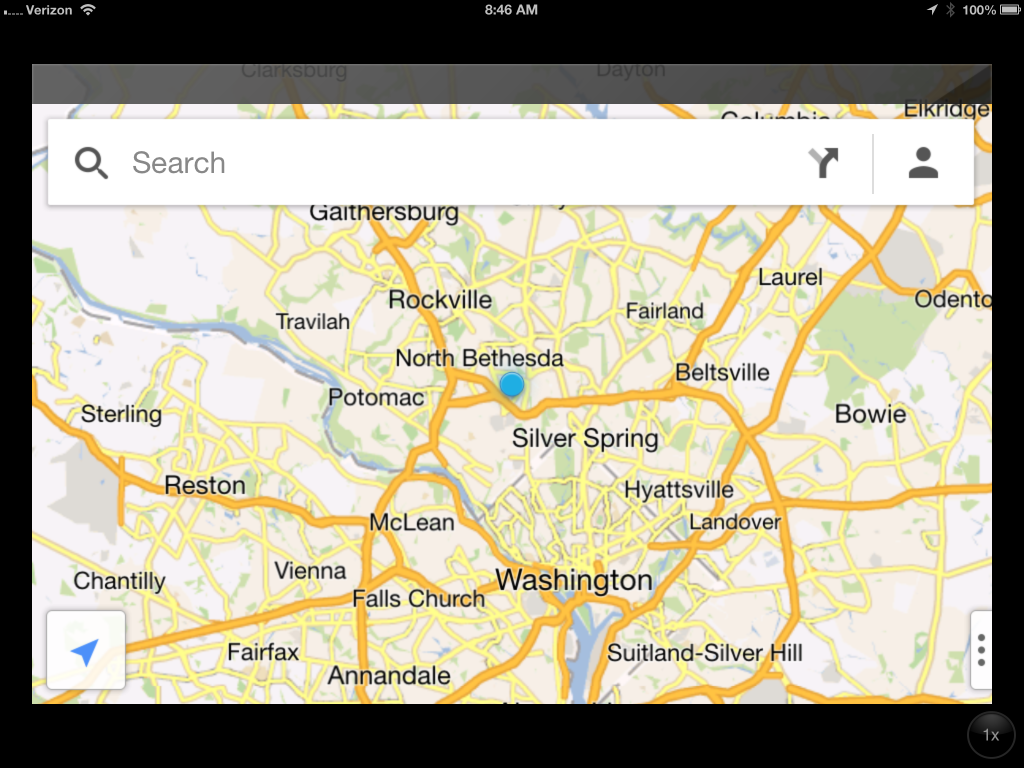


![Oops! Apple Needs a Remapping [Updated]](https://techpinions.com/wp-content/uploads/2012/09/apple-map.png)
